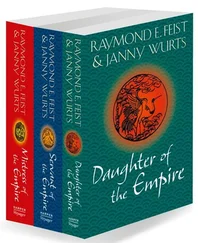Chalmers Johnson - The Sorrows of Empire - Militarism, Secrecy, and the End of the Republic
Здесь есть возможность читать онлайн «Chalmers Johnson - The Sorrows of Empire - Militarism, Secrecy, and the End of the Republic» весь текст электронной книги совершенно бесплатно (целиком полную версию без сокращений). В некоторых случаях можно слушать аудио, скачать через торрент в формате fb2 и присутствует краткое содержание. Год выпуска: 2003, ISBN: 2003, Издательство: Macmillan, Жанр: Старинная литература, на английском языке. Описание произведения, (предисловие) а так же отзывы посетителей доступны на портале библиотеки ЛибКат.
- Название:The Sorrows of Empire: Militarism, Secrecy, and the End of the Republic
- Автор:
- Издательство:Macmillan
- Жанр:
- Год:2003
- ISBN:9780805077971
- Рейтинг книги:4 / 5. Голосов: 1
-
Избранное:Добавить в избранное
- Отзывы:
-
Ваша оценка:
- 80
- 1
- 2
- 3
- 4
- 5
The Sorrows of Empire: Militarism, Secrecy, and the End of the Republic: краткое содержание, описание и аннотация
Предлагаем к чтению аннотацию, описание, краткое содержание или предисловие (зависит от того, что написал сам автор книги «The Sorrows of Empire: Militarism, Secrecy, and the End of the Republic»). Если вы не нашли необходимую информацию о книге — напишите в комментариях, мы постараемся отыскать её.
The Sorrows of Empire: Militarism, Secrecy, and the End of the Republic — читать онлайн бесплатно полную книгу (весь текст) целиком
Ниже представлен текст книги, разбитый по страницам. Система сохранения места последней прочитанной страницы, позволяет с удобством читать онлайн бесплатно книгу «The Sorrows of Empire: Militarism, Secrecy, and the End of the Republic», без необходимости каждый раз заново искать на чём Вы остановились. Поставьте закладку, и сможете в любой момент перейти на страницу, на которой закончили чтение.
Интервал:
Закладка:
The leader of the junta, Colonel George Papadopoulos, was an avowed fascist and admirer of Adolf Hitler. He had been trained in the United States during World War II and had been on the CIA payroll for fifteen years preceding the coup. His regime was noted for its brutality. During the colonel’s first month in power some 8,000 professionals, students, and others disliked by the junta were seized and tortured. Many were executed. In 1969, the eighteen member countries of the European Commission on Human Rights threatened to expel Greece—it walked out before the commission could act—but even this had no effect on American policies.
On July 15, 1974, after seven years of misrule, the Greek junta, in league with militarist colleagues on the island of Cyprus, attempted a coup d’état against Cypriot president Makarios, who was simultaneously primate and archbishop of the Greek Orthodox Church and a person who had promoted peaceful coexistence between the Greek and Turkish communities on the island. On July 20, Turkey responded by invading the island and dividing it into a Turkish-dominated north and a Greek-dominated south. The only country ever to recognize the Turkish Republic of North Cyprus is Turkey. In Athens, largely because the Turkish assault was an embarrassing defeat for Greece, the junta collapsed. 28It was replaced by a civilian government under a conservative politician, Constantine Karamanlis, which withdrew Greek troops from NATO’s military wing but continued to cooperate diplomatically with the United States—until the elections of 1981.
Andreas Papandreou, the son of George Papandreou, had been in exile in Sweden and Canada during the reign of the colonel. In August 1974, after the fall of the junta, he returned to Athens and created a new political party, the Panhellenic Socialist Movement (PASOK). Reflecting the events of the previous decade as well as the Communist victory in Vietnam, its platform was explicitly anti-American: get the bases out of Greece and get Greece out of NATO. In 1981, PASOK won a landslide victory and Andreas Papandreou became prime minister. The party repeated this success in the elections of June 1985. Papandreou never fully delivered on all his promises, but when it came to the bases, he did: there are only two small detachments of U.S. Air Force and Navy technical personnel left in Greece, both on Greek military bases.
THE PHILIPPINE BASES
The Spanish-American War created the Philippine bases, and the outcome of the Vietnam War started a process that in 1992 brought them to an end. America’s almost century-long record in the Philippines is one of colonialism, neocolonialism, and sponsorship of a hated dictator, which ultimately led to a successful anti-American revolution. The Philippine case is comparable to what happened in Greece except that the bases had been in existence for a much longer time and we took the Filipinos even more for granted than we did the Greeks. In 1946, at the same time that our government gave the Philippines their “independence,” it took measures to ensure that the islands remained indefinitely under our control. The Philippines were severely damaged during World War II and desperately in need of economic assistance; the new Philippine government had little choice but to accept the strings attached to the grant of independence. The resulting neocolonial system proved even more unfavorable to the Philippines than colonialism itself, crippling their capacity for democratic development for forty years—until the revolution of February 1986 drove Ferdinand Marcos from power and led to the closing of all U.S. military bases.
Three American initiatives in 1946 and 1947 rendered Philippine independence virtually meaningless. These were the Bell Act of 1946; the Military Bases Agreement of March 14, 1947; and the Military Assistance Pact of March 21, 1947. The Bell Act forced the Filipinos to modify their 1935 constitution, which stipulated that all corporations in the Philippines be 60 percent owned by Filipinos. It demanded “parity,” meaning that Americans would have the same rights and privileges as Filipinos to possess and exploit Philippine companies. It established “free trade” between the two countries for ten years, thereby eliminating the Philippines’ capacity to control American imports. It also allowed Americans to own and operate public utilities in the country. The effect was to tie the Philippines, in the words of journalist William J. Pomeroy, “to the old colonial trade pattern of being a supplier of raw agricultural products and mineral ores to the United States in exchange for U.S. manufactured goods.” 29The Bell Act effectively prevented industrialization in the islands despite abundant supplies of coal, iron ore, alloy metals, hydroelectric power, and a large labor force. To this day, the Philippines resemble Okinawa far more than they do Taiwan, which has become one of the richest and most industrialized nations in East Asia. Taiwan is an example of what Okinawa and the Philippines might have become had the United States not played a neocolonial role.
The United States made all payments to the Philippines for war damages dependent on the Filipinos’ acceptance of the Bell Act. A majority of the Philippine Congress deeply opposed a constitutional amendment granting parity, but the Americans and their local supporters worked behind the scenes to get eight representatives and three senators expelled for alleged fraud and terrorism, thereby achieving—by subtraction—the minimum number of votes needed to pass it.
Three days after amending the constitution, the Philippine government signed a military bases agreement giving the United States ninety-nine-year leases to twenty-three sites, sixteen active and seven held in reserve. The agreement authorized the United States to use these bases as it saw fit. Since Filipino public land laws specify that government leases cannot be longer than twenty-five years, the terms of the bases agreement immediately set off a popular protest movement. Successive American administrations stalled for nineteen years, until in 1966, the Johnson administration traded a new twenty-five-year lease agreement for Manila’s willingness to send a military contingent to Vietnam. The two most important installations were Clark Air Force Base, second in size only to Vandenberg in California, and Subic Bay, the Seventh Fleet’s main operational and repair facility in the western Pacific. Clark Field sprawled over ten thousand acres, larger than Singapore, and was enclosed by a twenty-two-mile security fence. The right to go through its garbage gave rise to two new villages, named appropriately after two Philippine presidents, Macapagal and Marcos. On June 15, 1991, Mount Pinatubo volcano, located ten miles away, erupted for the first time in six hundred years, covering the air field in ash and rendering it a total loss. Leases to the deep-water bay and drydock facilities at Subic Bay were thus the main points of contention in the final 1991 Philippine-American base negotiations.
A week after the original 1947 base agreement was signed, the Philippine government entered into still another treaty, the Military Assistance Pact, which established a Joint U.S. Military Advisory Group (JUSMAG) in Manila. This organization, composed of American military officers, was authorized “to assist and advise the Republic of the Philippines on military and naval matters,” including supplying the Philippine army with weapons and ammunition, and so essentially reestablished a military overlordship like that of the colonial era. On August 30, 1951, the United States and the Philippines signed a Mutual Defense Treaty (although there was nothing “mutual” about it), and on September 8, 1954, the United States, the Philippines, and other nations signed a treaty establishing the Southeast Asia Treaty Organization (SEATO). Both treaties turned effective control of the Philippine armed forces over to the United States via the JUSMAG, which with the CIA’s help handpicked a former army captain and ruling party congressman, Ramón Magsaysay, as a compliant secretary of national defense. In 1953, he became the third president of the Republic of the Philippines. With the United States now in control of the Philippine economy and military, and our own military properties secure, we were able to dictate huge military budgets that the Philippines could ill afford and to involve their armed forces in the Korean and Vietnamese Wars. The Philippine bases became critical staging areas for the American war in Vietnam, and the United States also used its installations on Luzon to carry out CIA plots against Indonesia in 1958 and 1965.
Читать дальшеИнтервал:
Закладка:
Похожие книги на «The Sorrows of Empire: Militarism, Secrecy, and the End of the Republic»
Представляем Вашему вниманию похожие книги на «The Sorrows of Empire: Militarism, Secrecy, and the End of the Republic» списком для выбора. Мы отобрали схожую по названию и смыслу литературу в надежде предоставить читателям больше вариантов отыскать новые, интересные, ещё непрочитанные произведения.
Обсуждение, отзывы о книге «The Sorrows of Empire: Militarism, Secrecy, and the End of the Republic» и просто собственные мнения читателей. Оставьте ваши комментарии, напишите, что Вы думаете о произведении, его смысле или главных героях. Укажите что конкретно понравилось, а что нет, и почему Вы так считаете.











